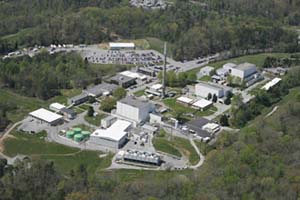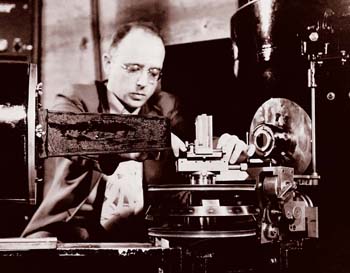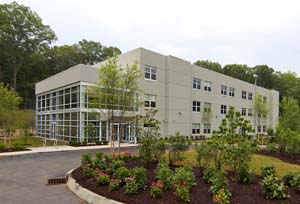Oak Ridge National Laboratory is home to two of the world’s most advanced neutron scattering research facilities: the Spallation Neutron Source (SNS) and the High Flux Isotope Reactor (HFIR). These facilities are operated and managed by the Neutron Sciences Directorate, an organization of about 600 staff. Funding is provided by the U.S. Department of Energy Office of Basic Energy Sciences.
World-Class Research Facilities
HFIR and SNS provide researchers with unmatched capabilities for understanding the structure and properties of materials, macromolecular and biological systems, and the fundamental physics of the neutron. Studies conducted here go beyond basic research and development, however, and are leading to technological advances that will benefit the scientific, business, and industrial communities.
With additional, complementary facilities such as the Joint Institute for Neutron Sciences, the Center for Nanophase Materials Sciences, and some of the world's most powerful scientific supercomputing facilities, ORNL is one of the world’s foremost centers for neutron scattering science.

HFIR is the highest flux reactor-based neutron source for condensed matter research in the United States. Completed in 1965, HFIR’s main goal at that time was the production of isotopes, primarily for medical use. Although isotope production is still an important part of HFIR operations, today its main mission is neutron scattering research. Materials irradiation and activation analysis services are also available for users. (larger image)

SNS is a one-of-a-kind research facility that provides the most intense, pulsed accelerator-based neutron beams in the world for scientific research and industrial development. The SNS suite of state-of-the-art instruments provides a variety of capabilities for researchers across a broad range of disciplines, such as physics, chemistry, materials science, and biology. (larger image)

ORNL has a long history in neutron scattering. In fact, the field was pioneered at ORNL in 1946 by Clifford G. Shull. Shull went on to be a corecipient of the 1994 Nobel Prize in Physics for his groundbreaking work. (larger image)
What's the Big Deal About Neutron Scattering?
Although most people don't know it, neutron scattering research has a lot to do with our everyday lives. Neutron studies have led to improvements in products used everyday such as medicine, electronics, shampoo, and airplanes and automobiles.
More about:
– Neutrons and neutron science
– Highlights of research conducted at SNS and HFIR
Who Conducts Research at SNS and HFIR?
Scientists from all over the world use our facilities. They submit proposals for research they would like to conduct. Those proposals are reviewed by independent scientists from within the neutron scattering community and the most promising ones are chosen. Researchers can use SNS and HFIR free of charge. For a fee, companies can also conduct proprietary research.
More about:
– Submitting a proposal to conduct research
– Collaborative Research Opportunities

The ORNL Guest is used by researchers as well as other overnight visitors to ORNL. It's located on the SNS site. (larger image)
Why Do They Come Here?
Neutron scattering can provide information about the structure and properties of materials that can't be obtained from other techniques such as x-rays or electron microscopes. Plus SNS and HFIR provide two different types of neutron beams. HFIR uses a reactor to generate neutrons in a steady beam. SNS uses an accelerator to generate pulsed beams. For some research, having neutrons available in a continuous beam is advantageous; for other research, a pulsed beam is better. The availability of both types of neutron sources at one facility gives scientists unique opportunities to work with some of the most advanced technology in the world in one location.
More about:
– HFIR and SNS
– Instruments
Where Are We?
We're located in Oak Ridge, Tennessee, in the foothills of the Great Smoky Mountains National Park–the most visited national park in the United States. Oak Ridge is home to about 30,000 people and is about 25 miles from downtown Knoxville, which has a population of about 400,000 within the metropolitan region. In addition to the nearby mountains, East Tennessee is home to a wealth of natural beauty in its many lakes and state parks. Both the Atlantic and Gulf coasts can be reached within a day’s drive.

